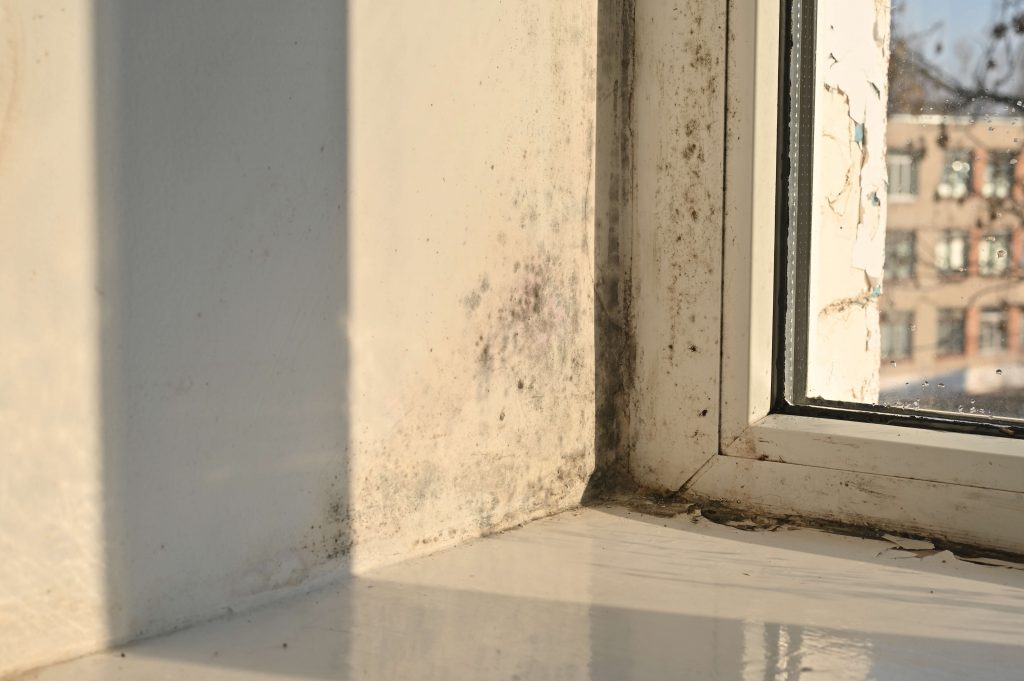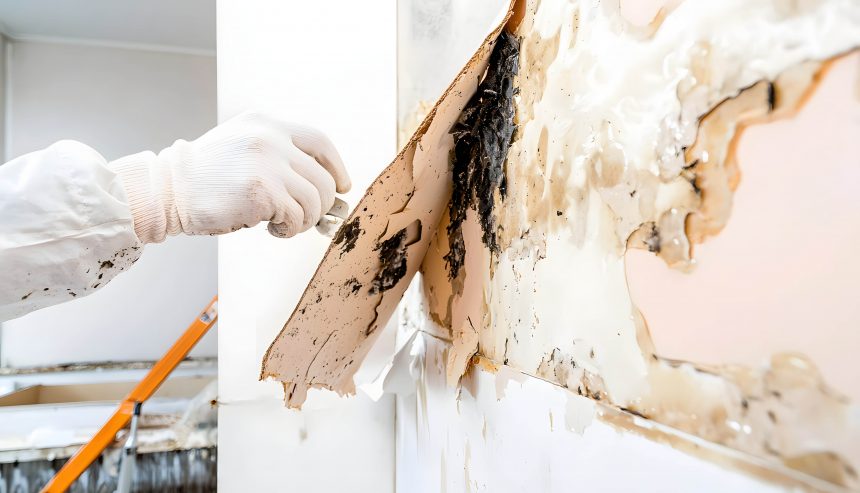Mold exposure is a silent threat that many Utah homeowners overlook until it becomes a serious health problem. Unlike visible water damage or storm destruction, mold often hides behind walls, under carpets, and in poorly ventilated spaces. Its presence may go unnoticed for weeks or months, yet its impact on your health can be immediate and severe. For families in Salt Lake City, Bluffdale, and across Utah, learning to recognize mold exposure symptoms early is critical to protecting your loved ones.
At PuroClean of Bluffdale, we’ve seen how untreated mold issues can spiral into costly restoration projects and long-term health complications. This blog breaks down the most common signs of mold exposure, why they matter in Utah’s unique climate, and what you should do if you suspect mold is making your family sick.
Table of Contents
Why Mold Exposure Is a Growing Problem in Utah
Mold exposure is becoming more common in Utah homes due to seasonal rains, monsoon moisture, and heavy winter snowfall that leads to indoor humidity and leaks. According to the Centers for Disease Control and Prevention (CDC), mold can grow in as little as 24–48 hours after water damage and release allergens, irritants, and potentially toxic substances into your living environment.
Utah’s housing structures, especially older homes or basements with poor ventilation, create ideal conditions for mold. Homeowners often don’t realize that the “musty smell” in their basement or the recurring cough in their children could be linked to mold exposure.
1. Mold Exposure and Respiratory Issues
One of the first and most common signs of mold exposure is respiratory discomfort. The EPA notes that mold spores can trigger coughing, wheezing, throat irritation, and asthma flare-ups.
If you notice:
- Frequent coughing at home but not outside
- Shortness of breath when indoors
- Aggravated asthma symptoms
…these could be linked directly to mold exposure in your Utah home.
2. Allergic Reactions and Skin Irritation
Mold spores act like allergens for sensitive individuals. The American College of Allergy, Asthma, and Immunology (ACAAI) reports that symptoms may include sneezing, runny nose, itchy eyes, and skin rashes.
Homeowners often confuse these signs with seasonal allergies. But if your symptoms improve when you leave home and worsen when you return, mold exposure could be the real culprit.
3. Eye Irritation and Redness
Mold spores floating in the air can irritate the eyes, leading to redness, itchiness, and watery discharge. Children and elderly family members are particularly vulnerable. According to the World Health Organization (WHO), prolonged mold exposure can increase the risk of chronic conjunctivitis.
4. Headaches and Unexplained Fatigue
Persistent headaches and chronic fatigue are often overlooked as mold-related symptoms. Studies published by the National Institutes of Health (NIH) show that exposure to mold and damp indoor environments may be linked to neurological effects such as headaches, memory issues, and mental fog.
If you feel exhausted even after resting, or experience frequent unexplained headaches, consider whether your home environment may be the cause.
5. Sinus Infections and Nasal Congestion
Chronic sinus infections are a red flag for mold exposure. According to the Mayo Clinic, mold is a known irritant that can inflame sinus tissues and trigger chronic rhinosinusitis.
Utah’s fluctuating weather and indoor heating systems dry out the air, worsening nasal issues when combined with mold spores.

6. Mold Exposure in Children: Special Risks
Children are especially sensitive to mold. The CDC warns that early mold exposure can increase the risk of developing asthma and respiratory illnesses in kids.
Signs of mold sensitivity in children include:
- Persistent cough or wheezing
- Skin rashes or eczema flare-ups
- Irritability and poor sleep quality
For Utah families, paying attention to children’s health changes during damp months is essential.
7. Mold Exposure and Pet Health
Pets, like humans, are affected by mold spores. According to PetMD, dogs and cats can develop respiratory issues, excessive scratching, and digestive problems from mold exposure.
If your pet frequently sneezes, wheezes, or scratches without a clear cause, your indoor air quality may be to blame.
8. Mold-Related Infections in Immunocompromised Individuals
For people with weakened immune systems, such as cancer patients, transplant recipients, or the elderly, mold exposure can lead to invasive fungal infections. The National Cancer Institute emphasizes that certain molds like Aspergillus can cause severe infections in immunocompromised individuals.
Homeowners should take extra precautions if vulnerable family members live in the home.
9. Long-Term Risks: Chronic Respiratory Diseases
Ignoring mold exposure can result in long-term consequences. The World Health Organization associates prolonged mold presence with the development of chronic respiratory conditions, including asthma and hypersensitivity pneumonitis.
For Utah residents already dealing with air quality challenges from seasonal inversions, mold exposure only adds to the risk.
How to Check for Mold in Your Utah Home
Recognizing mold exposure symptoms is one part of the puzzle. The other is identifying whether mold is present in your home. Common signs include:
- Musty odors
- Visible spots on walls, ceilings, or carpets
- Recent water damage or flooding
If you’re unsure, professional mold testing and inspection are the safest ways to confirm mold growth.
What to Do If You Suspect Mold Exposure
If you or your family are experiencing these symptoms, here are the steps to take:
- See a healthcare provider if you’re experiencing persistent health issues.
- Inspect your home for water damage or visible mold.
- Improve ventilation in damp areas like basements and bathrooms.
- Contact a professional mold remediation service like PuroClean of Bluffdale to safely remove mold and prevent regrowth.
Why DIY Mold Cleanup Is Risky
While small mold patches may seem manageable, the EPA warns that improper cleaning can spread spores and worsen exposure. Mold remediation requires specialized equipment, containment procedures, and safety gear.
DIY solutions like bleach may only mask the problem while mold continues to grow behind walls. That’s why Utah homeowners should trust certified professionals for mold removal.
Why Utah Homeowners Trust PuroClean of Bluffdale for Mold Remediation
At PuroClean of Bluffdale, we don’t just remove mold, we protect your health, property, and peace of mind. Here’s why homeowners choose us:
- Certified Experts: Trained in mold inspection, testing, and safe removal.
- Advanced Technology: HEPA filtration and drying systems to eliminate spores.
- 24/7 Emergency Response: Because mold damage doesn’t wait.
- Compassionate Service: We treat your home like it’s our own.
- Insurance Guidance: We help you navigate claims for mold-related damage.
Don’t Ignore Mold Exposure Symptoms
Mold exposure is not just a minor inconvenience; it’s a health and safety risk. By recognizing symptoms like respiratory issues, skin irritation, headaches, and chronic sinus problems, Utah homeowners can act early to protect their families.
If you suspect mold in your home, don’t wait. Contact PuroClean of Bluffdale today for professional mold inspection and remediation services. Together, we’ll ensure your home is safe, clean, and healthy for every season.
Don’t let mold put your health at risk. Call PuroClean of Bluffdale today at (081) 254-6204 or visit our Contact Page to schedule a mold inspection. Act now and protect your family with Utah’s trusted property restoration experts.




 PuroClean of Bluffdale
PuroClean of Bluffdale